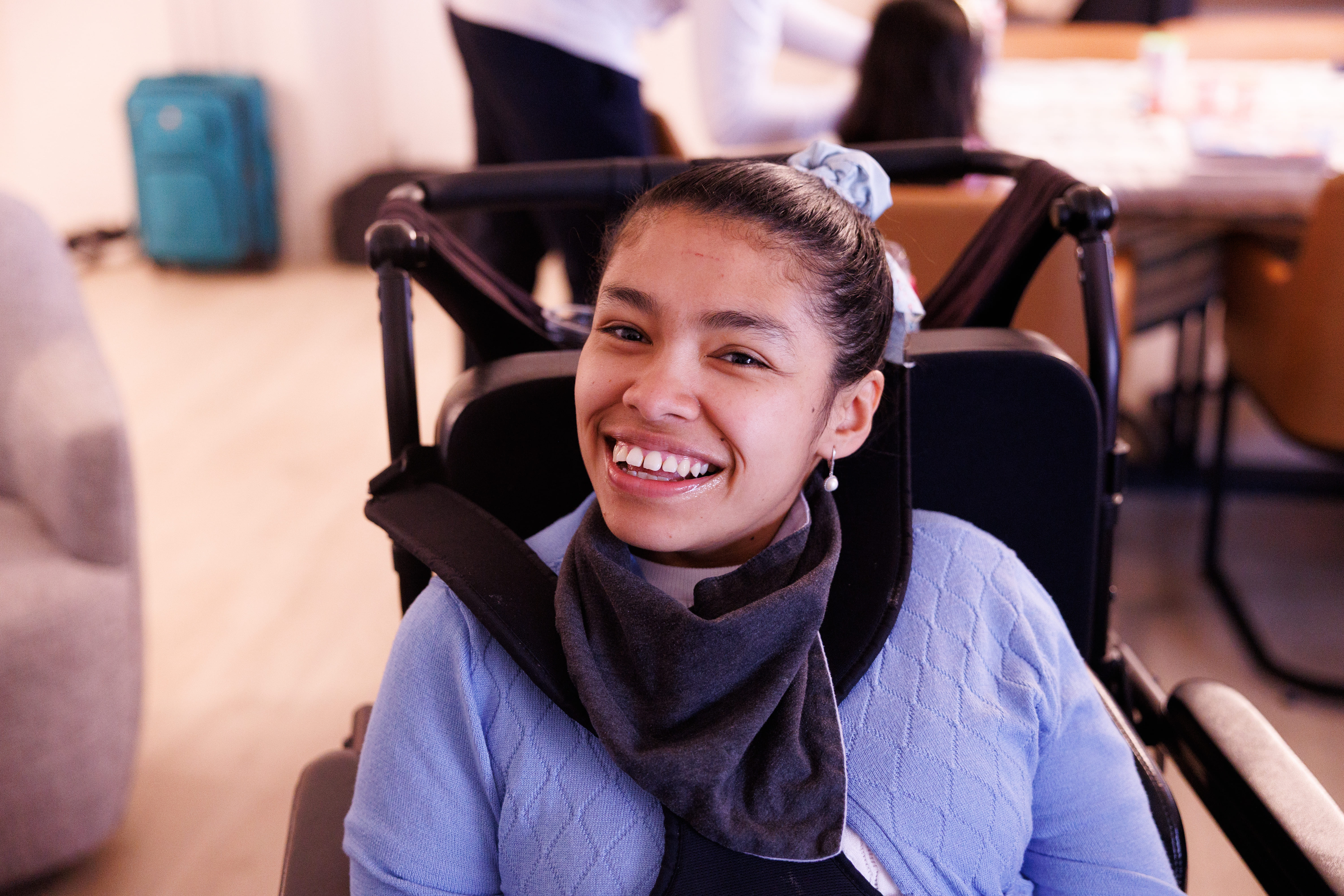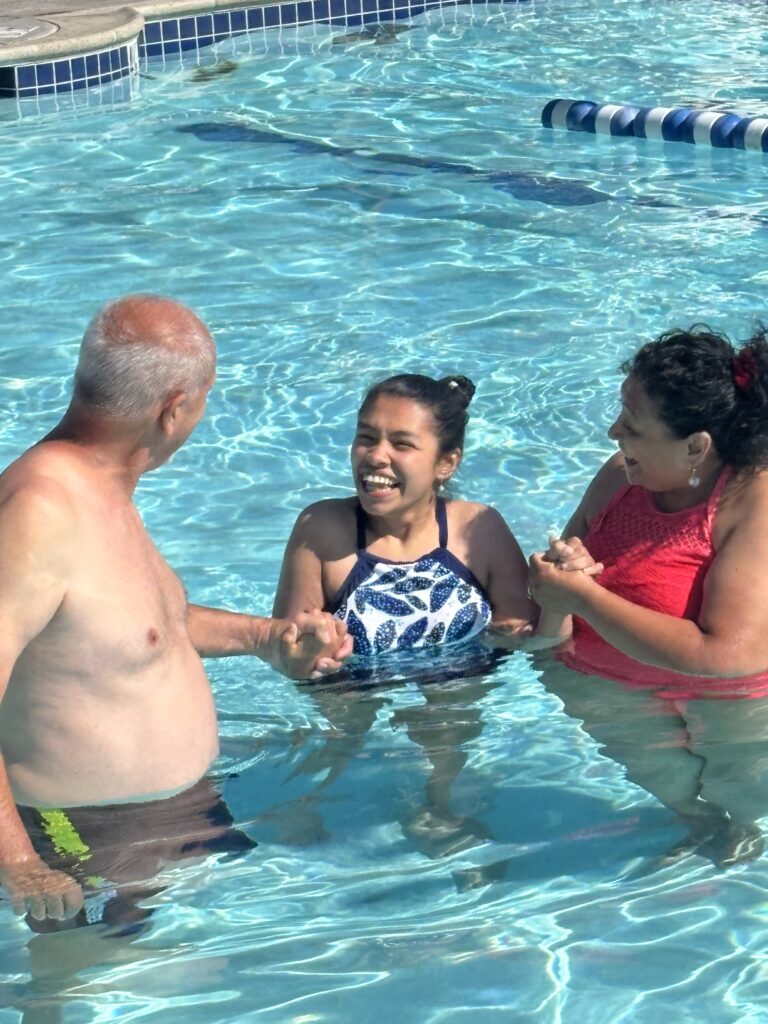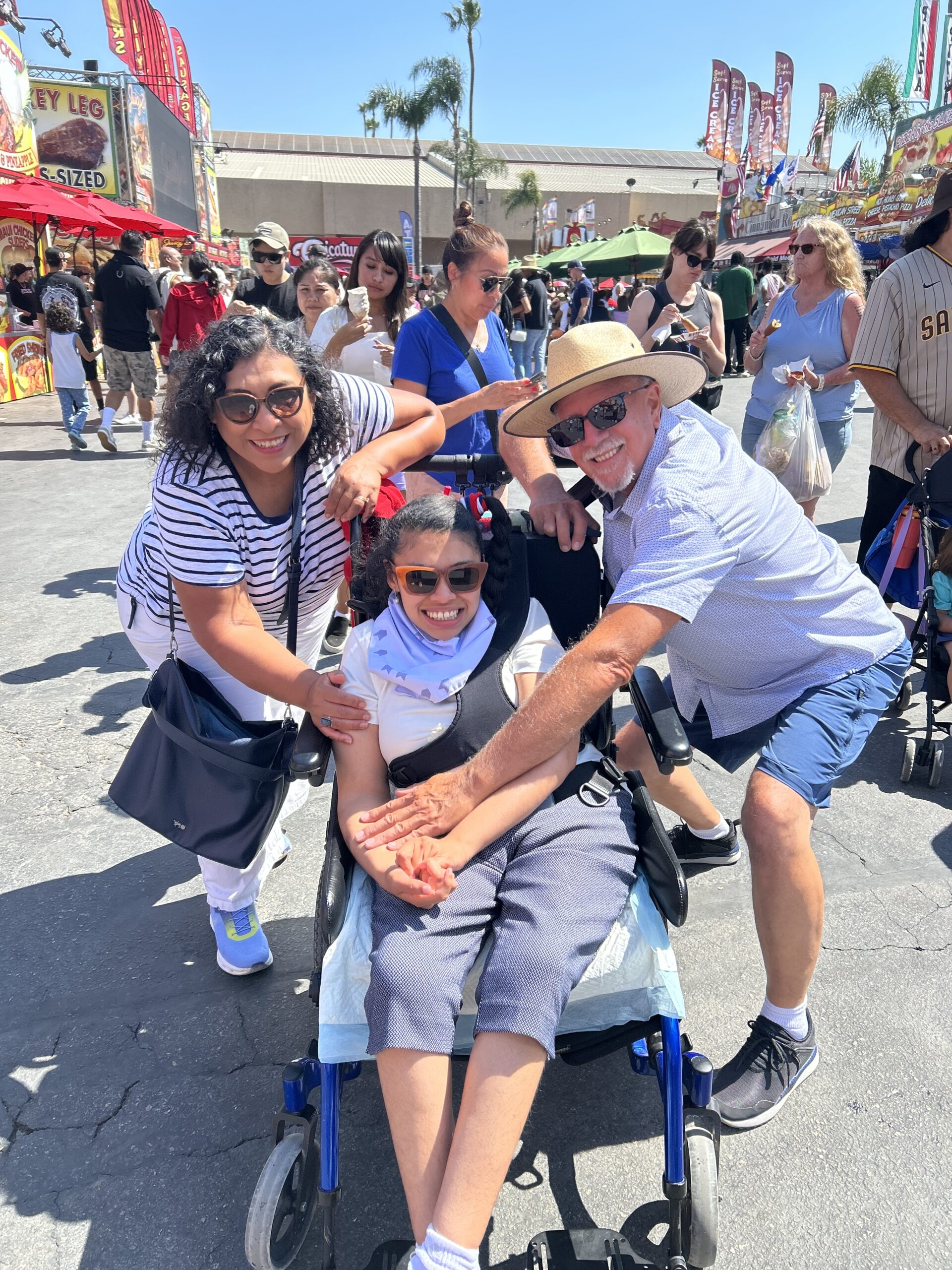Tiffany’s story by her mother, Ruth
“Tiffany has made me a better person. In spite of all the pain and suffering, I have learned to be more positive and happier.”

How did you feel when your child received a diagnosis of GM1?
I was in disbelief. I was shocked when I was told my daughter would only live about 5 more years. I could not understand what was happening, and I just cried with so much pain in my heart.
How has GM1 gangliosidosis affected your child?
Tiffany was once able to talk, run, and swim. Little by little, she’s lost her ability to talk and walk. Now we have to feed her, dress her, do her hair, and take care of her as though she were a baby. She has no coordination and can’t handle an object in her hands for too long.
The disease has brought numerous medical challenges. She’s had several surgeries — her hip degenerated and had to be replaced, causing her excruciating pain during that time. Her gallbladder was removed, and she had surgery to remove a cyst on her ovary. She has scoliosis, and now she has started having issues swallowing liquids.
Perhaps most heartbreaking is watching her struggle with involuntary movements that startle her. She has an urgency to bite anything and everything, and I believe she suffers from anxiety. But she can’t tell me how she feels or what’s going on. We just watch her and try to figure out what she needs.
How does GM1 impact your family?
I live in constant worry and grief. Our stress levels are very high because of the constant uncertainty, lack of information about her condition, and not knowing what to do to help her be comfortable. We are not able to travel or participate in family gatherings the way we used to. It’s very hard to travel with her, and two adults are needed to move Tiffany at all times.

We live to make sure she is well taken care of — her meals are prepared, her doctor appointments are scheduled, paperwork is filled out. We’re in constant communication with doctors, social workers, and therapists. We make sure she has activities that she enjoys to give her a semblance of a normal life. But the constant worry, grief, and feeling of helplessness takes a toll on our lives.
What is the hardest part of being a GM1 caregiver?
To see her deteriorate and lose all her abilities. I remember when she was able to talk and show her sass. But I think the hardest thing is that she can’t tell me when she’s in pain or feels sick.
What do you wish people understood more about rare diseases?
I wish people understood the level of effort and care our children require. How busy and how much work it takes to do things with her, and that we can’t just go as we please. She is part of our family, and we won’t leave her behind.

If we could tell people just one thing about GM1 gangliosidosis, what would it be?
It’s a brutal disease. There’s no other way to describe it. GM1 gangliosidosis steals everything from these beautiful children, piece by piece.
Why should people support the Cure GM1 Foundation and rare disease research?
To help these children because they deserve a better life, free of pain and suffering. They are all beautiful human beings, just like all the other children who are able to talk, walk, run, play sports, go to school, and lead a normal life. Our children deserve the same chance at life. They deserve hope for a future without pain.
Is there anything else you would like to add to your story?
I always share with people that in spite of all the pain and suffering, Tiffany has made me a better person. Instead of being angry, bitter, and pessimistic, I have learned to be more positive and happier. We enjoy the simple pleasures in life and are deeply appreciative of Tiffany’s smiles and the simple ways she’s able to tell us with her eyes that she loves us and appreciates what we do for her.
I hurt when I see all these children and parents go through so much suffering. I pray that we will have a cure because our children deserve a chance to live free of pain, and all our families deserve to live a better life.
Your support can help families like ours find hope and advance research toward a cure for GM1 gangliosidosis. To learn more about how you can help, please visit the Take Action page or Donate here.
